Black Lives Matter
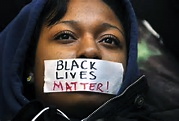
A Message for Black Lives Matter
Far be it for some ‘White Male’ to tell the oppressed Black Lives Matter crowd that they’re a bunch of crybabies. Best leave it to one of the 20th centuries greatest intellectuals – Thomas Sowell to explain why the oppression faced by BLM today is more imagined than real.
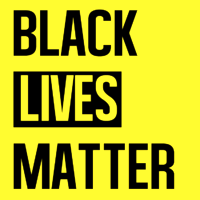 Black Lives Matter (BLM) is an activist movement, originating in the African-American community, that campaigns against violence toward black people. BLM regularly organizes protests around the deaths of black people in killings by law enforcement officers, and broader issues of racial profiling, police brutality, and racial inequality in the United States criminal justice system.
Black Lives Matter (BLM) is an activist movement, originating in the African-American community, that campaigns against violence toward black people. BLM regularly organizes protests around the deaths of black people in killings by law enforcement officers, and broader issues of racial profiling, police brutality, and racial inequality in the United States criminal justice system.
In 2013, the movement began with the use of the hashtag #BlackLivesMatter on social media, after the acquittal of George Zimmerman in the shooting death of African-American teen Trayvon Martin. Black Lives Matter became nationally recognized for its street demonstrations following the 2014 deaths of two African Americans: Michael Brown, resulting in protests and unrest in Ferguson, and Eric Garner in New York City. The originators of the hashtag and call to action, Alicia Garza, Patrisse Cullors, and Opal Tometi, expanded their project into a national network of over 30 local chapters during 2014-16. Concurrently, a broader movement involving several other organizations and activists emerged under the banner of “Black Lives Matter” as well.
Since the Ferguson protests, participants in the movement have demonstrated against the deaths of numerous other African Americans by police actions or while in police custody, including those of Tamir Rice, Eric Harris, Walter Scott, Jonathan Ferrell, Sandra Bland, Samuel DuBose, and Freddie Gray, the last of which led to protests and rioting in Baltimore. In the summer of 2015, Black Lives Matter activists began to publicly challenge politicians—including politicians in the 2016 United States presidential election—to state their positions on BLM issues. The overall Black Lives Matter movement, however, is a decentralized network and has no formal hierarchy.
Founding
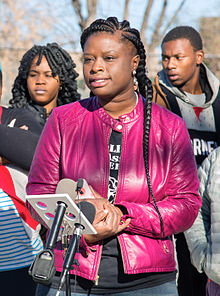 Nekima Levy-Pounds speaks during a Black Lives Matter demonstration in Minneapolis.
Nekima Levy-Pounds speaks during a Black Lives Matter demonstration in Minneapolis.
In the summer of 2013, after George Zimmerman’s acquittal for the shooting death of Trayvon Martin, the movement began with the hashtag BlackLivesMatter. The movement was co-founded by three black community organizers: Alicia Garza, Patrisse Cullors, and Opal Tometi.
BLM claims inspiration from the African-American Civil Rights Movement, the Black Power movement, the 1980s Black feminist movement, Pan-Africanism, Anti-Apartheid Movement, Hip hop, LGBTQ social movements and Occupy Wall Street.
Garza, Cullors and Tometi met through “Black Organizing for Leadership & Dignity” (BOLD), a national organization that trains community organizers. They began to question how they were going to respond to the devaluation of black lives after Zimmerman’s acquittal. Garza wrote a Facebook post titled “A Love Note to Black People” in which she wrote: “Our Lives Matter, Black Lives Matter”. Cullors replied: “#BlackLivesMatter”. Tometi then added her support, and Black Lives Matter was born as an online campaign.
In August 2014, BLM members organized their first in-person national protest in the form of a “Black Lives Matter Freedom Ride” to Ferguson, Missouri after the shooting of Michael Brown. More than five hundred members descended upon Ferguson to participate in non-violent demonstrations. Of the many groups that descended on Ferguson, Black Lives Matter emerged from Ferguson as one of the best organized and most visible groups, becoming nationally recognized as symbolic of the emerging movement. Since August 2014, Black Lives Matter has organized more than one thousand protest demonstrations. On Black Friday in November, Black Lives Matter staged demonstrations at stores and malls across the United States.
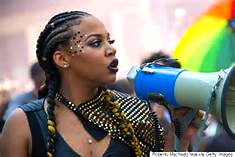 In 2015, after the death of Freddie Gray in Baltimore, Maryland, black activists around the world modeled efforts for reform on Black Lives Matter and the Arab Spring. This international movement has been referred to as the “Black Spring.” Connections have also been forged with parallel international efforts such as the Dalit rights movement. Expanding beyond street protests, BLM has expanded to activism, such as the 2015 University of Missouri protests, on American college campuses.
In 2015, after the death of Freddie Gray in Baltimore, Maryland, black activists around the world modeled efforts for reform on Black Lives Matter and the Arab Spring. This international movement has been referred to as the “Black Spring.” Connections have also been forged with parallel international efforts such as the Dalit rights movement. Expanding beyond street protests, BLM has expanded to activism, such as the 2015 University of Missouri protests, on American college campuses.
The U.S population’s perception of the movement varies considerably by race. According to a September 2015 poll on race relations, nearly two-thirds of African Americans mostly agree with Black Lives Matter, while 42% of white Americans are unsure or do not have an opinion about Black Lives Matter. Forty-one percent of white people thought Black Lives Matter advocated violence, 59% of whites thought Black Lives Matter distracted attention from the real issues of racial discrimination, and 46% of whites thought Black Lives Matter was a movement. By comparison, 82% of black people thought Black Lives Matter was a nonviolent movement, 26% of blacks thought Black Lives Matter distracted attention from the real issues of racial discrimination, and 67% of blacks thought Black Lives Matter was a movement. A similar poll in June 2016 found that 65% of black American adults supported Black Lives Matter and 40% of white American adults support it. Fifty-nine percent of black Americans thought Black Lives Matter would “be effective, in the long run, in helping blacks achieve equality” and 34% of white Americans thought so.
Structure and Organization
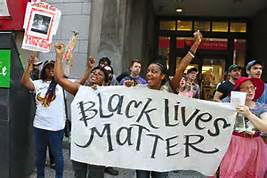 The phrase “Black Lives Matter” can reference a twitter hashtag and a slogan, social movement, and loose confederation of affiliated groups and organizations that advocate for multiple causes related to racial injustice. As a movement, Black Lives Matter is decentralized, and leaders have emphasized the importance of local organizing over national leadership. Activist DeRay McKesson has commented that the movement “encompasses all who publicly declare that Black lives matter and devote their time and energy accordingly”
The phrase “Black Lives Matter” can reference a twitter hashtag and a slogan, social movement, and loose confederation of affiliated groups and organizations that advocate for multiple causes related to racial injustice. As a movement, Black Lives Matter is decentralized, and leaders have emphasized the importance of local organizing over national leadership. Activist DeRay McKesson has commented that the movement “encompasses all who publicly declare that Black lives matter and devote their time and energy accordingly”
In 2013, Patrisse Cullors, Alicia Garza, and Opal Tometi formed the Black Lives Matter Network. Alicia Garza described the network as an online platform that existed to provide activists with a shared set of principles and goals. Local Black Lives Matter chapters are asked to commit to the organization’s list of guiding principals, but operate without a central structure or hierarchy. Alicia Garza has commented that the Network was not interesting in “policing who is and who is not part of the movement.” Currently, there are at least 30 Black Lives Matter chapters in the U.S., Canada, and Ghana. Other Black Lives Matter leaders include: DeRay Mckesson, Shaun King, Marissa Johnson, Nekima Levy-Pounds, and Johnetta Elzie.
In 2015 Johnetta Elzie, DeRay McKesson, Brittany Packett, and Samuel Sinyangwe, initiated Campaign Zero, a campaign aimed at promoting policy reforms to end police brutality. The campaign released a ten point plan for reforms to policing, with recommendations including: ending broken windows policing, increasing community oversight of police departments, and creating stricter guidelines for the use of force. New York Times reporter John Eligon reported that some activists had expressed concerns that the campaign was overly focused on legislative remedies for police violence.
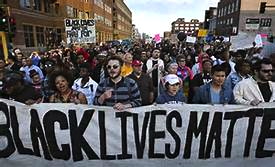 The loose structure of Black Lives Matter has contributed to confusion in the press and among activists, as actions or statements from chapters or individuals are sometimes attributed to “Black Lives Matter” as a whole. Matt Pearce, writing for the Los Angeles Times, commented that the “the words could be serving as a political rallying cry or referring to the activist organization. Or it could be the fuzzily applied label used to describe a wide range of protests and conversations focused on racial inequality.” Political Scientist Frederick C. Harris has argued that this “group-centered model of leadership” is distinct from the older charismatic leadership model that characterized civil rights organizations like Jesse Jackson’s Rainbow PUSH Coalition and Al Sharpton’s National Action Network.
The loose structure of Black Lives Matter has contributed to confusion in the press and among activists, as actions or statements from chapters or individuals are sometimes attributed to “Black Lives Matter” as a whole. Matt Pearce, writing for the Los Angeles Times, commented that the “the words could be serving as a political rallying cry or referring to the activist organization. Or it could be the fuzzily applied label used to describe a wide range of protests and conversations focused on racial inequality.” Political Scientist Frederick C. Harris has argued that this “group-centered model of leadership” is distinct from the older charismatic leadership model that characterized civil rights organizations like Jesse Jackson’s Rainbow PUSH Coalition and Al Sharpton’s National Action Network.

